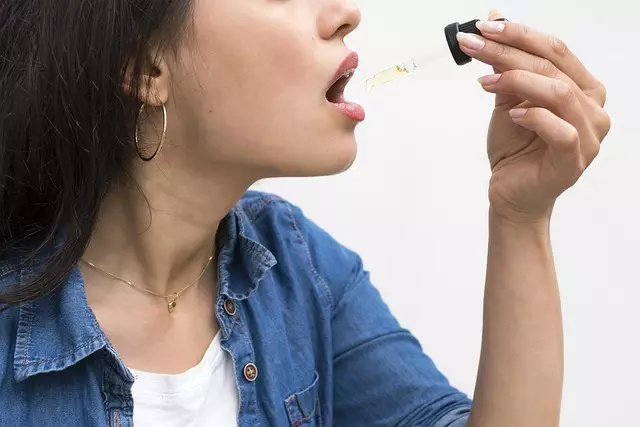TL;DR:
High-potency cannabinoids (HPCs) like THC and CBD, with concentrations often exceeding 20%, offer intense effects and potential therapeutic benefits. While sought after for faster relief and bioavailability, HPCs pose risks of side effects and heightened sensitivity, especially for novices. Accurate quantification requires advanced techniques like GC-MS. The legal landscape varies globally, dictating regulations on THC limits, licensing, and age restrictions. Personalized medicine approaches are emerging through research into HPC interactions with the endocannabinoid system. Real-world accounts highlight their potential to revolutionize wellness by managing chronic pain, anxiety, and sleep disorders. Responsible use under professional guidance is crucial for safe consumption.
“Unraveling the Power of High Potency Cannabinoids: A Comprehensive Guide
In today’s rapidly evolving cannabis landscape, understanding high potency cannabinoids is essential. This powerful article delves into the intricate world of cannabinoid strength, exploring its fundamentals and impact. We’ll demystify ‘what are high potency cannabinoids?’ and navigate through proven measurement methods.
From safety considerations to legal aspects, real-life testimonials, and future research prospects, this guide offers an all-encompassing view. Prepare to discover the benefits, potential risks, and diverse applications of high-potency products, as we explore the dynamic realm of advanced cannabinoid science.”
Understanding Cannabinoid Potency: The Basics

Cannabinoid potency refers to the strength or concentration of active compounds in a particular plant material, such as cannabis. When we talk about high-potency cannabinoids, it means that specific chemicals within the plant have reached elevated levels, making them more potent than their counterparts in lower-potency strains. These cannabinoids include tetrahydrocannabinol (THC) and cannabidiol (CBD), which are the most well-known and studied compounds.
Understanding potency is crucial when consumers aim to manage specific conditions or achieve desired effects. High-potency cannabinoids offer more intense experiences, whether for medical purposes or recreational use. However, it’s essential to note that potency should not be the sole factor in choosing a cannabis product. Other factors, like strain characteristics, cultivation methods, and individual tolerance, play significant roles in the overall user experience.
What Are High Potency Cannabinoids?

High potency cannabinoids refer to compounds derived from cannabis plants that possess exceptionally strong psychological and physiological effects compared to their lower-potency counterparts. These concentrated molecules, such as tetrahydrocannabinol (THC) and cannabidiol (CBD), are known for their ability to interact with the body’s endocannabinoid system, which plays a significant role in regulating various bodily functions.
When consumed, high potency cannabinoids can induce intense experiences, offering both potential therapeutic benefits and increased risks. While they may provide relief for specific medical conditions, such as chronic pain or anxiety, when used responsibly under professional guidance, their potency also means they can lead to more pronounced side effects and heightened sensitivity, particularly in individuals new to cannabis use.
Methods of Measuring Cannabinoid Strength

Measures of strength for cannabinoids, particularly in products like cannabis, have evolved significantly. Traditional methods often relied on measuring the weight or volume of the compound present, but these don’t always reflect potency accurately. Today, advanced techniques like chromatography and spectrophotometry are employed to quantify specific cannabinoids, such as THC and CBD, with remarkable precision. These analytical methods separate and identify compounds in a sample, allowing for a more detailed understanding of its composition.
High potency cannabinoids, with concentrations exceeding 20% or more, require specialized equipment and techniques. For instance, gas chromatography-mass spectrometry (GC-MS) is a powerful tool that can detect even trace amounts of cannabinoids, providing an accurate picture of their strength. This data is crucial for consumers looking to understand the effects and benefits of their products, as well as for industry professionals ensuring product consistency and quality control.
Benefits of Using High-Potency Products

In today’s market, consumers are increasingly seeking high-potency products, especially in the realm of cannabis and its derivatives. The primary benefit lies in their potency to deliver more potent effects, offering a more intense experience for users. High-potency cannabinoids, such as THC or CBD, provide enhanced bioavailability, meaning smaller doses can yield significant results. This is particularly advantageous for those seeking targeted relief from specific ailments.
These products also cater to folks who desire a faster and more efficient method of consumption. With higher concentrations, users can achieve desired effects in less time, making them ideal for navigating hectic lifestyles. Moreover, high-potency options often come in diverse forms, allowing consumers to choose their preferred method of intake, whether it’s tinctures, vapes, or edibles, ensuring a personalized and convenient experience.
Considerations for Users: Safety and Dosage

When considering products with high potency cannabinoids, users must prioritize safety and responsible dosage. It’s crucial to consult healthcare professionals for personalized guidance, especially when dealing with potent CBD or THC products. Start with low doses and gradually increase as needed, allowing your body time to adjust.
Understanding potential side effects is essential. Different individuals may respond uniquely to high-potency substances, so monitoring your reaction and being mindful of any adverse effects are key. Always choose reputable brands that provide clear product information and third-party lab testing for quality and consistency.
Legal and Regulatory Aspects of High Potency Cannabis

The legal landscape surrounding high potency cannabis is complex and ever-evolving, with regulations varying widely across regions. As the understanding of cannabinoids deepens, so does the need for clear and consistent guidelines to ensure consumer safety and prevent misuse. In many countries, high potency cannabis products are strictly regulated, requiring special licensing and adherence to stringent quality control measures. These regulations often include limits on THC concentrations, packaging requirements, and age restrictions, aiming to mitigate potential risks associated with potent cannabis strains.
The unique challenges posed by high potency cannabinoids necessitate a delicate balance between accessibility for medical use and public safety. Regulatory bodies must carefully consider the latest scientific evidence, patient needs, and societal concerns to craft effective policies. This dynamic approach ensures that the legal availability of high-potency cannabis keeps pace with advancements in research while maintaining a responsible framework for its distribution and consumption.
Exploring Different Types of High-Potency Cannabinoids

In the world of cannabis, high-potency cannabinoids have become a topic of interest for both enthusiasts and researchers. These powerful compounds offer unique therapeutic benefits and a more intense experience compared to their lower-strength counterparts. Exploring different types of high-potency cannabinoids provides an insightful look into their diverse effects on the body and mind. Each cannabinoid, such as THC (tetrahydrocannabinol) and CBD (cannabidiol), has distinct properties that cater to various needs and preferences.
THC, often associated with the euphoric “high” of cannabis, is renowned for its potent psychotropic effects. On the other hand, CBD, non-intoxicating, has gained popularity for its potential medicinal benefits. Beyond these two prominent cannabinoids, there’s a vast spectrum of minor compounds like CBN (cannabinol) and CBG (cannabigerol), each contributing to the complex cannabis tapestry. Understanding the unique attributes of these high-potency cannabinoids enables consumers to make informed choices, ensuring they access the most suitable strains for their desired effects.
The Future of High Potency Cannabinoid Research

The future of high potency cannabinoids research is poised for significant advancements, driven by growing acceptance and expanding medical applications. As the legal landscape continues to shift globally, more focus is being placed on understanding the complex chemistry and therapeutic potential of these powerful compounds. Scientists are delving deeper into the endocannabinoid system, exploring how high-potency cannabinoids interact with receptors in the brain and body, opening doors to novel treatments for conditions ranging from chronic pain to neurological disorders.
Innovations in extraction techniques and analysis methods are further fueling progress. Researchers can now isolate and study specific cannabinoids more precisely, leading to personalized medicine approaches. This precision promises to enhance efficacy while minimizing side effects, making high-potency cannabinoids a game-changer in healthcare. The pursuit of knowledge in this domain is not just about discovery; it’s about harnessing nature’s resources to improve lives.
Personal Stories: Real-Life Impact of High-Potency Treatments

In the realm of healthcare, personal stories often serve as powerful narratives that bring abstract concepts to life. When it comes to understanding the impact of high-potency cannabinoids, these tales are particularly compelling. Many individuals have shared their experiences with potent CBD or THC products, highlighting significant improvements in managing chronic pain, anxiety, and sleep disorders. These real-life accounts illustrate the potential for high-potency treatments to revolutionize wellness routines.
For instance, some patients have described a profound reduction in inflammation leading to better mobility and an improved quality of life. Others have attested to the calming effects of high-potency cannabinoids in alleviating severe anxiety symptoms, allowing them to face daily challenges with newfound confidence. Such personal journeys not only underscore the effectiveness of these compounds but also emphasize their ability to enhance overall well-being, making them a game-changer for those seeking alternative treatment options.



